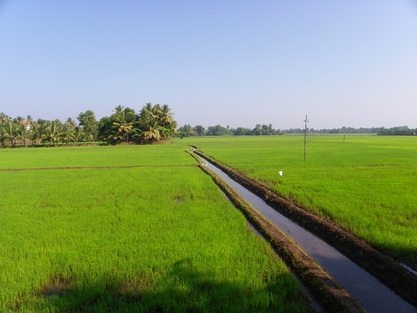
This is a view of the rice fields from our cottage during our stay at Green Palm Homes
We arrived at Green Palms Homestay on New Year's Eve. It had been quite a journey to get here which seems to be the case when travelling by bus in India. We arrived in Allepey which is the gateway town to the backwaters of Kerala. Upon arriving we walked from the bus station about a kilometer to a boat ferry stop that would take us to the homestay. This was very exciting! We hopped on the ferry and rode for about one hour along the waterways. Riding along in the ferry was a real treat even after being on a bus for four hours, as the air is clean and the waters were tranquil. When we were dropped off, we walked along . . .
the riverbank on a little pathway for 15 minutes before finally arriving at Green Palms. It was absolutely gorgeous! Phillip our host met us right away and he explained what to expect during our visit and the various tours and activities that were available.
We were shown to our room and we were in awe. We had to walk along a narrow pathway that led us to the back of the property to our cottage. The cottage had just been built and was set at the edge of their rice fields. The scenery was picturesque and straight out of a travel magazine: we loved it! Allegra immediately took out her camera and started snapping photos of the outside cottage, our rooms, the deck and rice fields. We had arrived in paradise and it was the perfect place to welcome the New Year!
This homestay is located on an island in the backwaters of Kerala. Kerala is a state in India that caters to tourists and is the only place in the free world to elect a communist government. The backwaters are a series of waterways that course around hundreds of man-made islands and reclaimed land. This area was originally a huge river delta comprised mainly of marshy stretches of land with brackish water. The original inhabitants (I wonder if they had some Dutch blood?) saw the potential fertility of the delta and so built dikes to create a series of tiny man-made islands which are all inter-connected . You can picture these islands in the shape of donut, where all of the homes are built around the circumference and the land in the middle is used to grow rice. The land where the homes are built is just above sea level and all the land in the centre is below sea level. The water level is controlled by hundreds of miles of dykes, pumps and gateways creating lush rice fields in the centre of each island. They call this area the rice bowl of Kerala and it is a paradise away from all of the hustle and bustle of the major cities and towns.
We were shown to our room and we were in awe. We had to walk along a narrow pathway that led us to the back of the property to our cottage. The cottage had just been built and was set at the edge of their rice fields. The scenery was picturesque and straight out of a travel magazine: we loved it! Allegra immediately took out her camera and started snapping photos of the outside cottage, our rooms, the deck and rice fields. We had arrived in paradise and it was the perfect place to welcome the New Year!
This homestay is located on an island in the backwaters of Kerala. Kerala is a state in India that caters to tourists and is the only place in the free world to elect a communist government. The backwaters are a series of waterways that course around hundreds of man-made islands and reclaimed land. This area was originally a huge river delta comprised mainly of marshy stretches of land with brackish water. The original inhabitants (I wonder if they had some Dutch blood?) saw the potential fertility of the delta and so built dikes to create a series of tiny man-made islands which are all inter-connected . You can picture these islands in the shape of donut, where all of the homes are built around the circumference and the land in the middle is used to grow rice. The land where the homes are built is just above sea level and all the land in the centre is below sea level. The water level is controlled by hundreds of miles of dykes, pumps and gateways creating lush rice fields in the centre of each island. They call this area the rice bowl of Kerala and it is a paradise away from all of the hustle and bustle of the major cities and towns.
One of the first things we did was take a sunset tour with Thomas, one of the brothers who is still farming the family's land. We started just before sunset and as we walked around the island, Thomas pointed out different flowers and herbs along the way such as the different varieties of hibiscus and peppercorn. There is even a rose that is white at night and bright pink in the day! Thomas mentioned that the dikes today are all reconstructed with stone and mortar breakwalls but they are slowly deteriorating since all the original mangrove and coconut trees were removed to put in these stone breakwalls. Now they realize what a mistake it was to remove these trees since the root mats provided a great foundation against the water's erosion. They are slowing replanting coconut trees to help reinforce these stone breakwalls.
We started out on the outside edge of the island and then cut in along a dyke that went through the middle of the island. As we walked along the path he explained more about the rice paddies. They grow two crops a year (each crop takes about four months to grow) and then they leave the fields fallow for the remaining four months. Along with the rice fields, coconut trees are planted throughout the higher ground. He said the coconut trees are an important crop for the farmers because they provided them with a continual source of income as the rice crops matured. They harvest coconuts every forty five days and use the entire coconut. They drink and can the coconut milk, the outside husk is used to weave welcome carpets and the hard shell is used for firewood. The state of Kerala is a huge exporter of these coconut husk welcome mats and if you buy a mat in Canada there is a good chance it came from this area.
As we continued our walk the sun was setting and we had an amazing view of the sunset from the rice fields overlooking the homes and palm trees. It was beautiful. When it got dark we came out at a different end of the island. Two traditional canoes were waiting to pick us all up and we slowly paddled back to their property under the moonlit sky, with Thomas singing traditional canoeing songs in the dark. A beautiful end to a beautiful day.
I am grateful,
John
I am grateful,
John
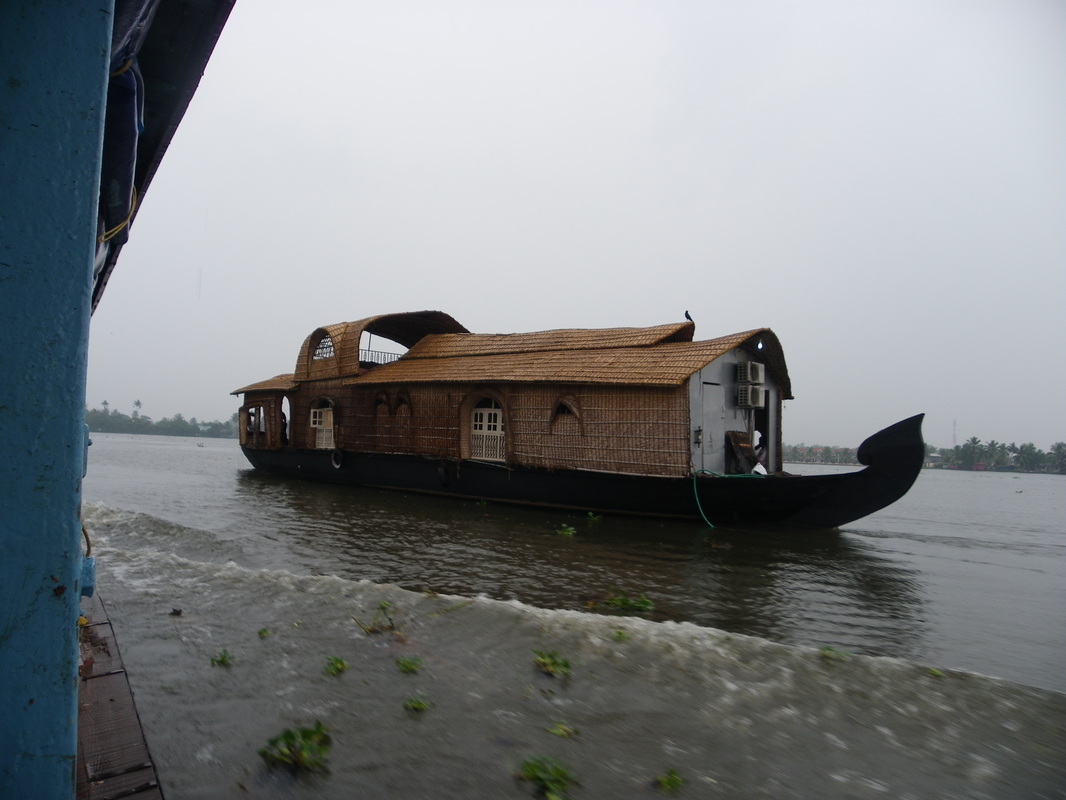
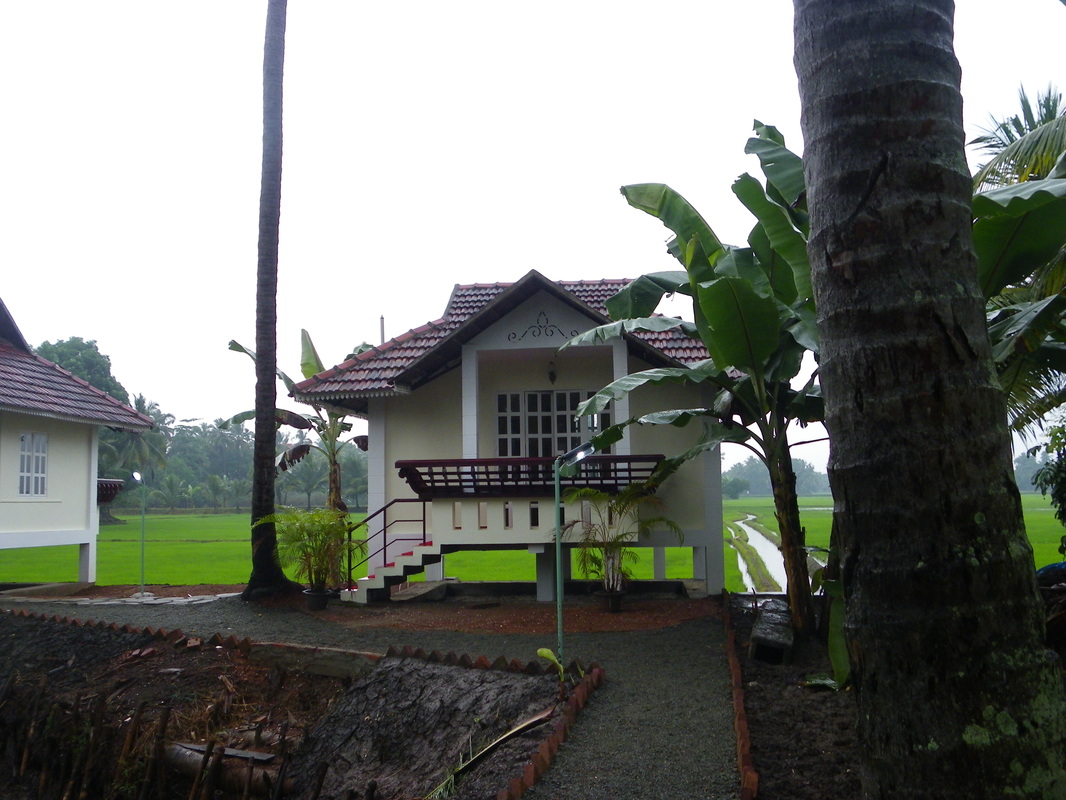
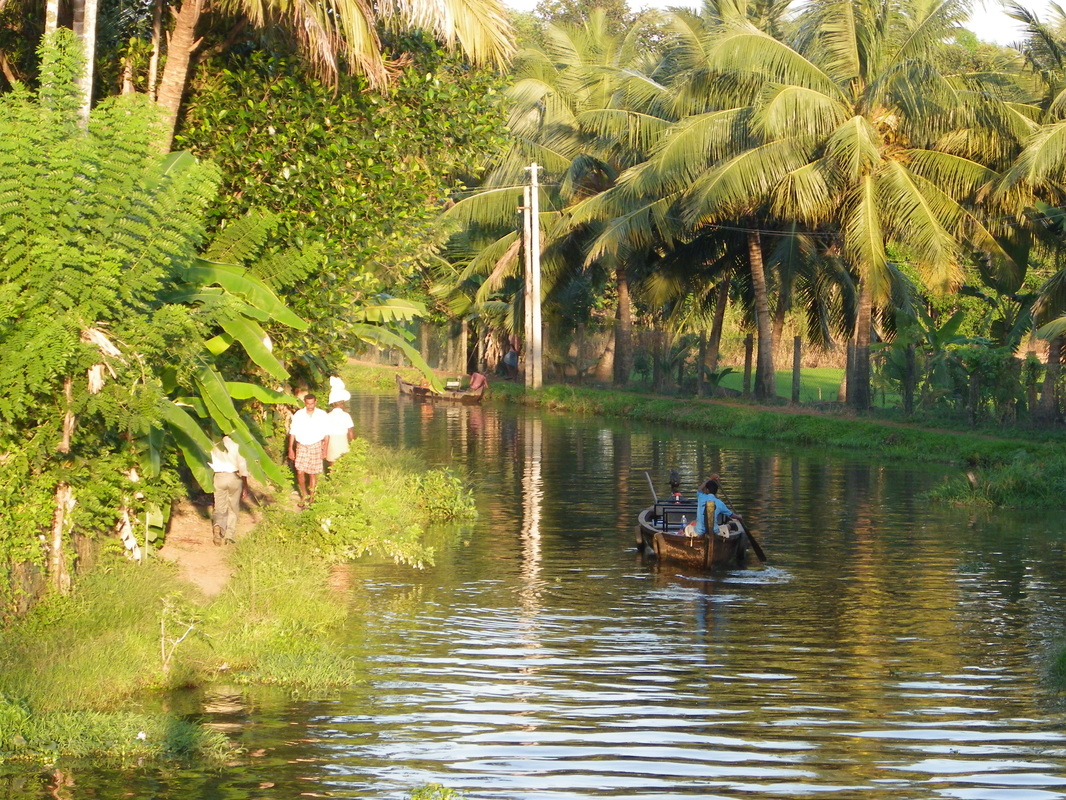
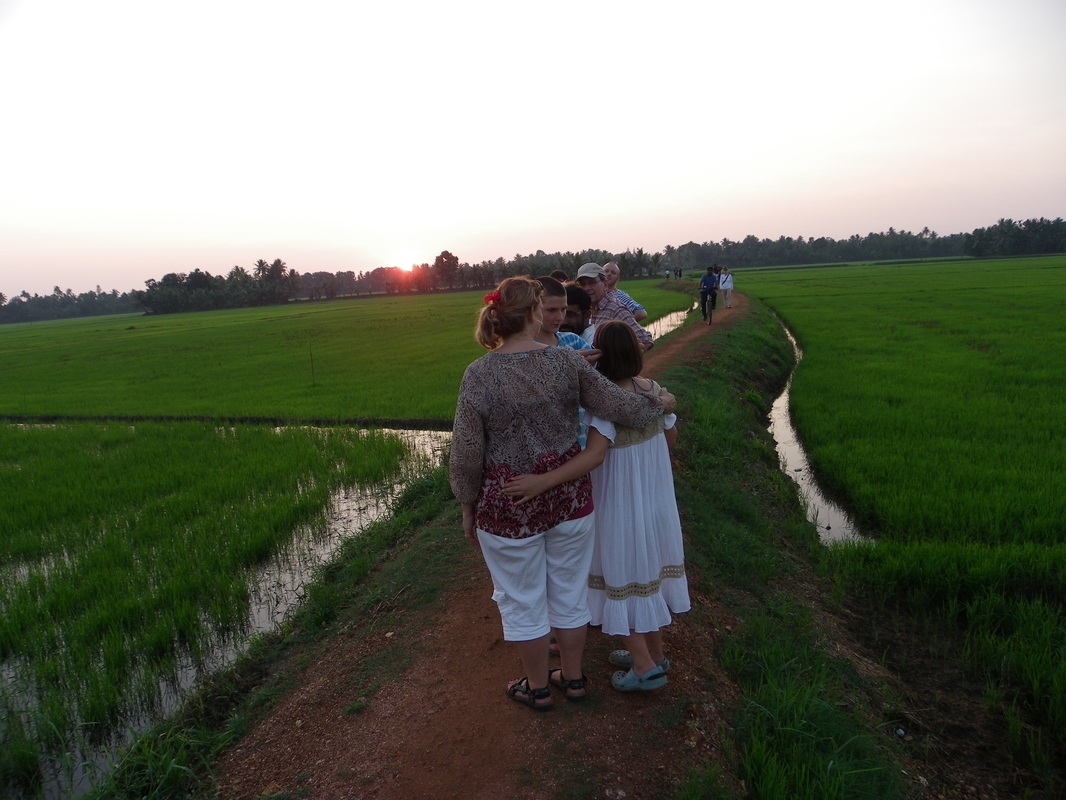
 RSS Feed
RSS Feed